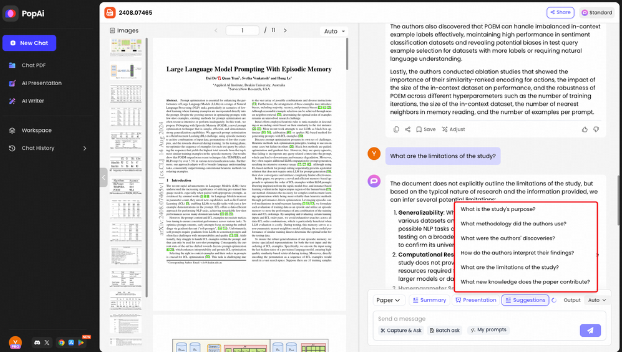Summarizing research papers is a key skill for students and academics. With the rise of artificial intelligence (AI), new tools are emerging that can assist with writing research paper summaries. AI tools can analyze long and complex papers, identify key information, and generate coherent summaries.
This article provides an overview of using AI for writing research paper summaries, covering the benefits of AI, steps for using AI summarization tools, best practices, and examples of AI summarization tools. With the help of AI, summarizing dense research content can become easier, faster, and more accurate.
Overview of AI in Research Paper Summary Writing
AI has brought several advantages to summarizing research papers. The first benefit is the ability of AI algorithms to rapidly process lengthy, complex papers that would take a long time for humans to summarize manually. Some AI tools can ingest papers of over 30 pages and identify the central topics and key findings within minutes.
Secondly, AI tools excel at determining the most salient points within a paper through statistical analysis of word frequencies, semantic meaning, and discourse structure. They can pinpoint information that contributes most to understanding a paper’s core message. This helps remove fluff and ensures summaries focus on crucial details.
Finally, AI summarization systems can generate readable summaries on their own using natural language processing. The most advanced tools can produce summaries with coherent flow, transitions, and word choice resembling those written by humans. This automates the most labor-intensive parts of summarization.
AI Tools for Summary Writing
Many AI summarization tools now exist to assist with research paper summaries. Both free and paid online apps are available, along with downloadable software packages. These tools ingest text documents, analyze the content, and output summaries in a fraction of the time it would take manually. Some also allow customizing summary length and style.
Leading AI summarizers oriented towards academic content include SciTLDR, and Summarizer.com. You can also find AI pdf reader tools that can be used to chat with all your lengthy documents.
Steps to Write a Research Paper Summary using AI
Writing summaries with AI involves a four-step workflow: selecting an appropriate tool, inputting the research paper(s), customizing the AI-generated summary, and editing the summary.
Selecting the right AI tool
When selecting an AI summarization tool, consider factors like the length of documents it can process, accuracy of identification of key details, readability of the generated text, output options like summary length, and integration with word processors. Picking the right tool upfront saves time.
Input Research Paper Content
Inputting research papers into the AI tool is the next step. Most tools allow copy-pasting text or uploading PDFs. Supply all sections relevant to understanding the paper’s topics, findings, conclusions – including the abstract, introduction, analyses, and conclusion section. More context leads to better summaries.
Customize the Summary
Once the summary is generated, it requires customization to fit specific needs. Most tools allow tweaking aspects like word count, sentence length, formatting, and inclusion of specific details. Customize the summary to contain the amount of information suitable for your purpose.
Editing and Proofreading
The final step involves editing and proofreading the AI-generated summary carefully before use. While AI tools continue improving, it’s still possible for inaccuracies, erroneous text, plagiarism, or incoherent passages to slip through. Review and revise the summary to rectify any such issues.
Best Practices for Writing a Research Paper Summary Using AI
When writing research paper summaries with AI tools, adopting best practices is vital for producing high-quality and usable summaries.
The first best practice is avoiding plagiarism and properly citing sources, even when using AI assistance. Many tools provide attribution for quoted text, but it’s the user’s responsibility to ensure the final summary avoids plagiarism through appropriate citing and paraphrasing.
Ensuring accuracy and relevance is equally critical for quality summaries. Review the key topics, findings, and facts presented in the AI-generated summary against the original paper to verify accuracy. Also, retain only details that are most relevant based on the reasons for creating the summary.
Additionally, incorporate your own analysis and insights wherever possible to augment the AI tool’s work. Analysis of key themes, discussion of implications of findings, connections to other research – add such domains of human intelligence to make the summary unique.
Lastly, refine and revise the AI-generated summary to craft clear, cohesive, and readable text. Improve flow between passages, structure the summary to convey the crux upfront, adjust vocabulary
Conclusion
Using AI to generate research paper summaries provides several key benefits. AI tools can quickly read and analyze large volumes of academic papers and distill the key information into coherent summaries. This saves researchers and academics significant time that would otherwise be spent reading entire papers.
Moving forward, AI looks set to take on an increasingly important role in academic literature analysis and summarization.
The capability of AI systems to rapidly read, comprehend and summarize vast amounts of peer-reviewed papers will save researchers countless hours. This will allow academics to focus their efforts on higher-value tasks like designing experiments, analyzing data and writing their own manuscripts.


